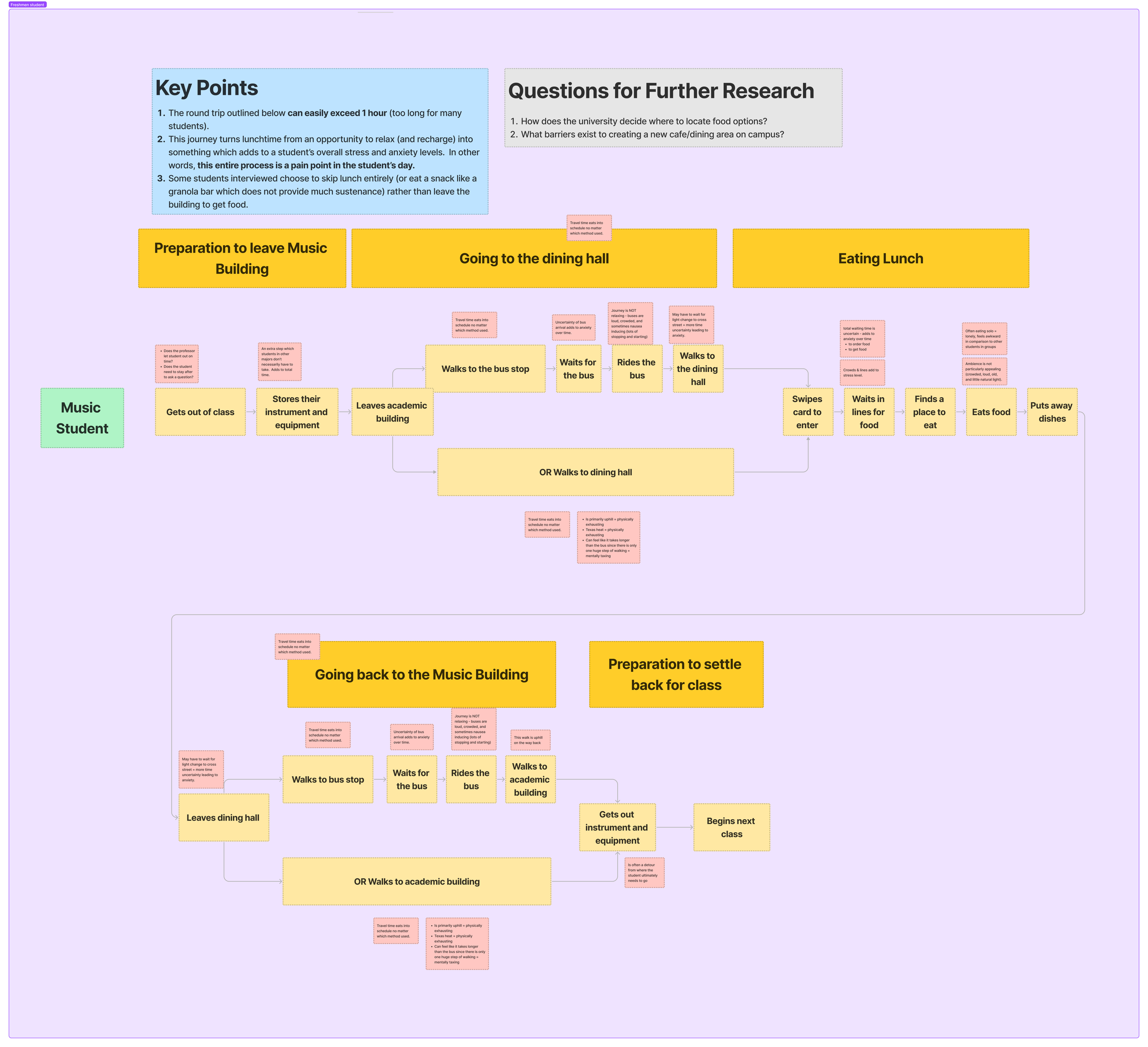
Food for Thought…
Lunchtime is also a time for personal recharge. For many people, refueling the mind during the midday is as important as refueling the body.
Unfortunately, college life presents barriers to appropriate recharge for some students, which contributes to a feeling of burnout. How would you respond if…
…you only had ten minutes for lunch - would you prioritize food or rest?
…the nearest dining hall was a 20 minute walk on a hot day - would you bother going?
Using the power of design thinking, we set out to research this problem and pilot a solution. The video below summarizes our pitch.
Video Summary
0:00 - User Journey
1:33 - Pitch
About the Project
Goal
Use design thinking to improve the experience of “food on the go” at UT.
Team Members
Pablo Pejlatowicz, Gayathri Ramesh, David Kerr
Advisor
Lauren Serota
Timeline
7 Weeks
My Role
Graduate Researcher with the UT Center for Integrated Design
My Responsibilities
Collaborated to generate research plan
Conducted twenty snap interviews with undergraduate students
Facilitated clear communication and brainstorming between group members
Ideated pilot plan
Created video (above) for final presentation
Our Process
-

Focus Statement
-

Research Plan
-

Contextural Interviews
-

Interview Analysis
-

Distilling Insights
-

Pilot Ideation
-

Pilot Action Plan
-

Subject-Matter Expert Interviews
-

Pilot Launch
-

Pitch
Research
Our primary research consisted of two strategies. First, we immersed ourselves in the food culture of campus. Next, we conducted contextual interviews with undergraduate students to help us understand how the experience differed for them.
Analysis
We used affinity diagramming to map our qualitative data and seek out patterns in student behavior. Two key insights emerged from this analysis:
Students all use lunchtime differently; the commonality is that they’re doing whatever recharges their energy level.
Opportunities for dining (and thus time for recharge) are not distributed evenly across campus; in fact, Fine Arts students suffer an acute lack of options.
Pilot Planning
To address the shortage of dining options within the Fine Arts cluster (and to test our theory that there would be demand), we decided to launch a pop-up food stand.
First we consulted with UT Dining Services to check regulations, where we discovered that University rules would limit us to serving foods with a minimum of preparation and handling. Coffee and cookies fit that bill nicely.
After the meeting, we scouted the area we planned to use. We then journey-mapped a typical fine-arts student lunch period to help us plan for our expected users.

Pilot Launch
On the day of our pilot, we positioned our stand just outside the Fine Arts Library and then watched as more than sixty students (and a few faculty members) visited us over two hours.
Pitch
Once we had our pilot data, we pitched our concept to the class in competition for a (hypothetical) $50,000 grant.
To promote our concept more effectively, we created the pitch video found at the top of this page. It’s definitely worth a watch!




















